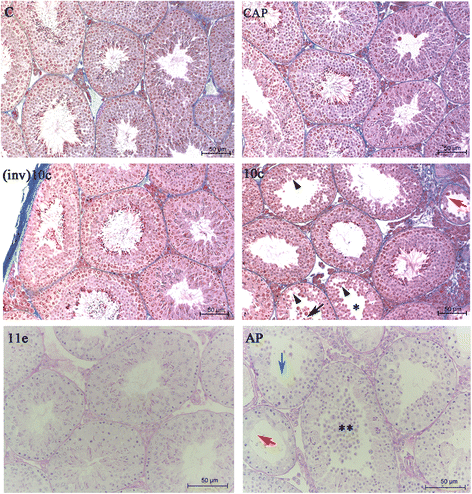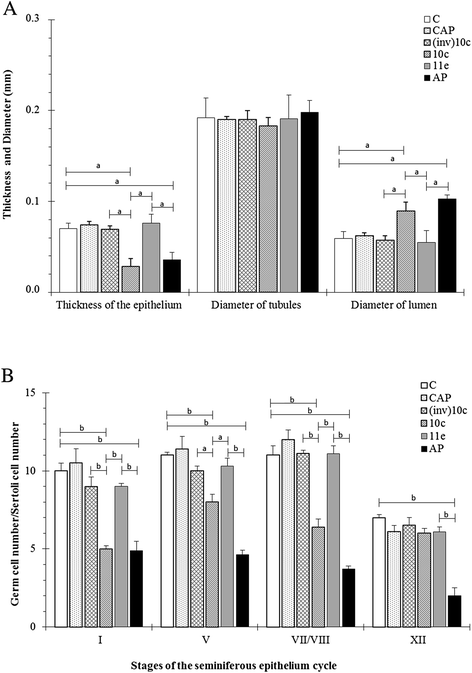Angiotensin-converting enzyme inhibitors of Bothrops jararaca snake venom affect the structure of mice seminiferous epithelium
- PMID: 26244047
- PMCID: PMC4524108
- DOI: 10.1186/s40409-015-0030-y
Angiotensin-converting enzyme inhibitors of Bothrops jararaca snake venom affect the structure of mice seminiferous epithelium
Erratum in
-
Erratum to: Angiotensin-converting enzyme inhibitors of Bothrops jararaca snake venom affect the structure of mice seminiferous epithelium.J Venom Anim Toxins Incl Trop Dis. 2015 Aug 26;21:33. doi: 10.1186/s40409-015-0032-9. eCollection 2015. J Venom Anim Toxins Incl Trop Dis. 2015. PMID: 26311611 Free PMC article.
Abstract
Background: Considering the similarity between the testis-specific isoform of angiotensin-converting enzyme and the C-terminal catalytic domain of somatic ACE as well as the structural and functional variability of its natural inhibitors, known as bradykinin-potentiating peptides (BPPs), the effects of different synthetic peptides, BPP-10c (<ENWPHQIPP), BPP-11e (<EARPPHPPIPP), BPP-AP (<EARPPHPPIPPAP) and captopril were evaluated in the seminiferous epithelium of male mice.
Methods: The adult animals received either one of the synthetic peptides or captopril (120 nmol/dose per testis) via injection into the testicular parenchyma. After seven days, the mice were sacrificed, and the testes were collected for histopathological evaluation.
Results: BPP-10c and BPP-AP showed an intense disruption of the epithelium, presence of atypical multinucleated cells in the lumen and high degree of seminiferous tubule degeneration, especially in BPP-AP-treated animals. In addition, both synthetic peptides led to a significant reduction in the number of spermatocytes and round spermatids in stages I, V and VII/VIII of the seminiferous cycle, thickness of the seminiferous epithelium and diameter of the seminiferous tubule lumen. Interestingly, no morphological or morphometric alterations were observed in animals treated with captopril or BPP-11e.
Conclusions: The major finding of the present study was that the demonstrated effects of BPP-10c and BPP-AP on the seminiferous epithelium are dependent on their primary structure and cannot be extrapolated to other BPPs.
Keywords: Angiotensin-converting enzyme; B. jararaca; Bradykinin-potentiating peptides; Seminiferous epithelium; Spermatogenesis.
Figures



References
-
- Pauls K, Fink L, Franke FE. Angiotensin-converting enzyme (CD143) in neoplastic germ cells. Lab Invest. 1999;79(11):1425–1435. - PubMed
-
- Ramchandran R, Sen GC, Misono K, Sen I. Regulated cleavage-secretion of the membrane-bound angiotensin-converting enzyme. J Biol Chem. 1994;269(3):2125–2130. - PubMed
LinkOut - more resources
Full Text Sources
Other Literature Sources
Miscellaneous

